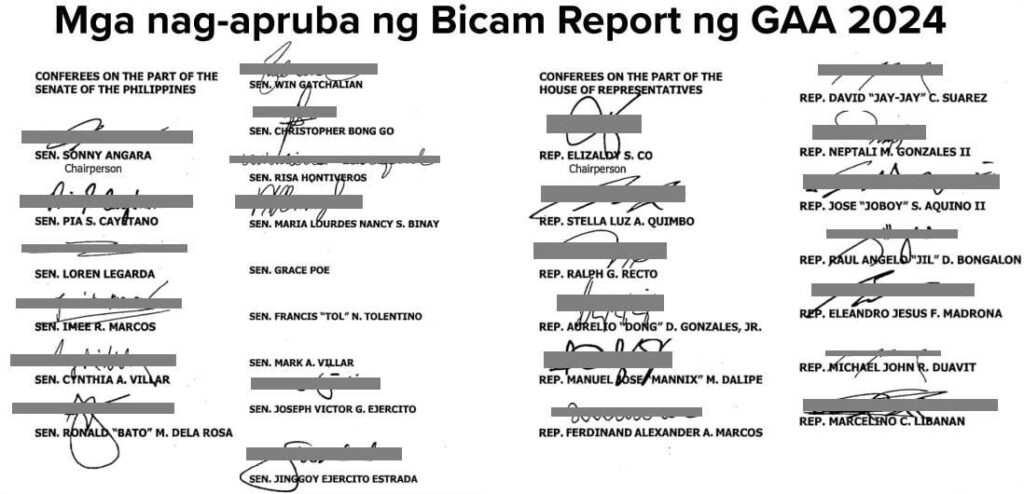By DIEGO MORRA
Dr. Antoinette Raquiza of the Asian Center of the University of the Philippines in Diliman delivered the latest study on the rise of the Philippine oligarchy, how it amassed power and how it continues to control the levers of power despite the pretense that the country is a democracy, with suffrage exercised by citizens every three years and the budget crafted on their behalf by the House of Representatives before Malacanang and the bicameral conference committee (BCC) chops up the annual appropriations bill into so many components that must be funded by people’s money. Graft is at the very core of the budget. It is the people’s curse.
Dr. Raquiza deserves praise for her seminal work in tracing the inglorious history of the oligarchy, not from the principalia, the sangleyes from which Emilio Aguinaldo descended, or the territorial leaders of yore who maintained their serfs and monopolized land in conjunction with the Spanish colonial authorities and religious corporations, but from the onset of the Philippine republic. The ilustrados who sought accommodation by the Americans were only too willing to work for the new colonial masters while the erstwhile revolutionary generals wanted backpay and 10,000 hectares of land but ended up having Nueva Ecija towns named in their honor. Truly rebels with a cost.
The oligarchs of the American colonial period were just junior partners of imperialism, like those who collaborated with the Japanese Imperial Army during World War II and championed Tokyo’s Greater East Asia Co-Prosperity Sphere. Those who now abide by China’s territorial claims in the West Philippine Sea (WPS) and the Spratlys also want Beijing’s revanchism to succeed and they, too, bet that Chinese President Xi Jinping’s “shared prosperity” model will enhance the country’s bankrupted economy. They are grasping water, as sponsored political and economic classes always sink and cannot hold their heads above water. Japan learned its lesson but China is still meandering and trying to encourage the dominant classes in poorer countries to follow Beijing’s lead but experience has shown that private and state corporations are consumed by the profit motive and were organized to act as footmen to achieve China’s imperial designs.
Dr. Raquiza took pains in gathering statistics, analyzing the political economy and the various factions that comprise the plutocracy, which is what the Philippines really is, and its being linked to international trade since the 1600s, which grew with the opening of the Suez Canal, brought in the mercantilists from Spain, France, England, even Denmark (the story is that the Zobels were originally Danish Protestants) and the entrepreneurs of the Basque region in Spain (like the Aboitizes who started with the abaca business in Leyte, the Aranetas from the Spanish peasantry who had a way with water and cornered the then fertile fields of Cubao), the Sorianos, Elizaldes, Rojases (in contrast to the Chinese Roxases), and the landed mestizo families that thrived on the cultivation of sugarcane. Meanwhile, Chinese traders also made hay and their dominant position in retailing and wholesaling, their emphasis on “low profit but big volume sales” guaranteed success through time. The Henry Sys, John Gokongweis and hundreds of Chinese-Filipino families made their pile in that manner. After succeeding, they then ventured into commercial activities, industrial production and used their cash and influence to secure monopolies or oligopolies to further expand their capital accumulation and investments.
The Americans pampered the sugar industry, protected the landlords and created the bureaucracy while shaping the political infrastructure, with the descendants of the principalia gaining territorial and political control since the Spanish colonial period and beyond 1907, when the colonial legislature was established, and in 1920, when local politicians learned how the US pork barrel system operated. As the Americans chopped up the country into fiefdoms for logging, mining, plantations and other economic activities, Filipinos were assigned to manage the ideological state apparatus for the Aves de Rapina like Dean Worcester. So, the dialectical relationship blossomed, with the Americans amassing wealth, their Filipino allies getting educated to efficiently control the bureaucracy and get their pound of flesh from the laboring classes.
With their prolonged internship with the Americans, the traditional power holders learned how to operate within the government and the Americans were only too willing to pamper these little brown Americans, mold their thinking and teach them how to use the levers of power. In fine, the plutocracy was born, first to serve the colonial masters and later on to help themselves with the national wealth as the Americans prepared to grant “independence.” From 1907 to 2025 is a lot of time, 118 years to be exact, and within that time-frame, the compradors became wealthy, the landlords obscenely rich and annual national budget an occasion to divide the loot. The dynasties and the plutocrats operated seamlessly, the former providing the political backing and the legislation required for the latter to grab better business opportunities, from power generation and distribution, newspapers and radio-TV stations, shipping, banking and everything else in the economy.
With the plutocrats now making a mockery of political parties—Ramon Ang as the power behind the Nationalist People’s Coalition (NPC), Enrique Razon as the head honcho of the National Unity Party (NUP), Manny Villar as the proprietor of the Nacionalista Party (NP) and, of course, Ferdinand Marcos Jr. as the chief of the hodgepodge Partido Federal ng Pilipinas (PFP) and his cousin, Speaker Ferdinand Martin Romualdez of the Lakas-CMD—it has become impossible for a mass-based political party to contest national positions with a high probability of success. This is like the post-revolutionary United States, when the leaders conspired to block poor farmers and slaves from exercising their right to suffrage despite the declaration of the 1787 Constitution that the US was a democracy. Consider how racism was institutionalized in the Dredd Scott decision of US Chief Justice Roger Taney, which roared that Scott cannot own property since he was a slave. Blacks and Whites may be equal, the ruling declared pompously, but they are “separate.”
A mass of economic statistics and reports from Forbes will show that the list of Filipino oligarchs featured the same names for the past decades, with only a few interlopers registered, like Manny Villar, whose claim of having trillion-peso wealth has been ridiculed after some officials disclosed that he had not been paying taxes on the thousands of hectares of land that he owns and would now develop as a Villar City. Add to that pesky issue the fact that the former Senate President controlled majority of the 534 water districts nationwide, many of which have lost their water supply under their joint ventures with PrimeWater of the Villars. That the Villars took control of so many water districts when his son Mark was public works secretary under the unlamented Duterte regime. This is proof that bureaucrat-capitalism is in the Villar DNA and no amount of explaining would erase the fact that he had a big role in taking control of a vital resource. Now, he claims he had nothing to do with the PrimeWater cornering water districts but he was the public works secretary who controlled the water districts at that time. Mark, tell that to the Marines, will you?




